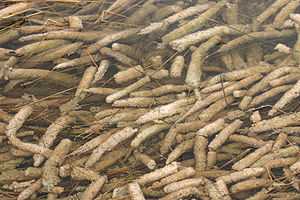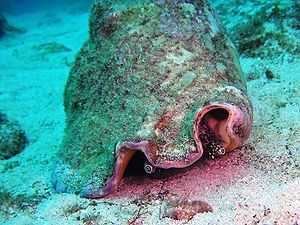Periphyton


Periphyton is a complex mixture of algae, cyanobacteria, heterotrophic microbes, and detritus that are attached to submerged surfaces in most aquatic ecosystems. It serves as an important food source for invertebrates, tadpoles, and some fish. It can also absorb contaminants; removing them from the watercolumn and limiting their movement through the environment. The periphyton is also an important indicator of water quality; responses of this community to pollutants can be measured at a variety of scales representing physiological to community-level changes. For this reason periphyton has often been used as an experimental system in e.g. Pollution-induced community tolerance studies.
Periphyton communities are used in aquaculture food production systems for the removal of solid and dissolved pollutants. Their performance in filtration is established and their application as aquacultural feed is being researched.
A risk for periphyton stems from urbanization. Increased turbidity levels associated with urban sprawl can smother periphyton causing its detachment from the rocks they live on. They can be important for the clearance of harmful chemicals and reducing turbidity.
Periphyton serve as good indicators of water quality[1] because:
- They have a naturally high number of species.
- They have a fast response to changes.
- They are easy to sample.
- They are known for their tolerance/sensitivity to change.
References
- ↑ , EPA - Periphyton as Biological Indicators
External links
- Marine Biological Laboratory Sustainable Aquaculture Initiative Developing plant-based fish diets and pond management protocols for the Comprehensive Development Project (CODEP) in L’Acul, Haiti
- Macrophyte and Periphyton lab
.